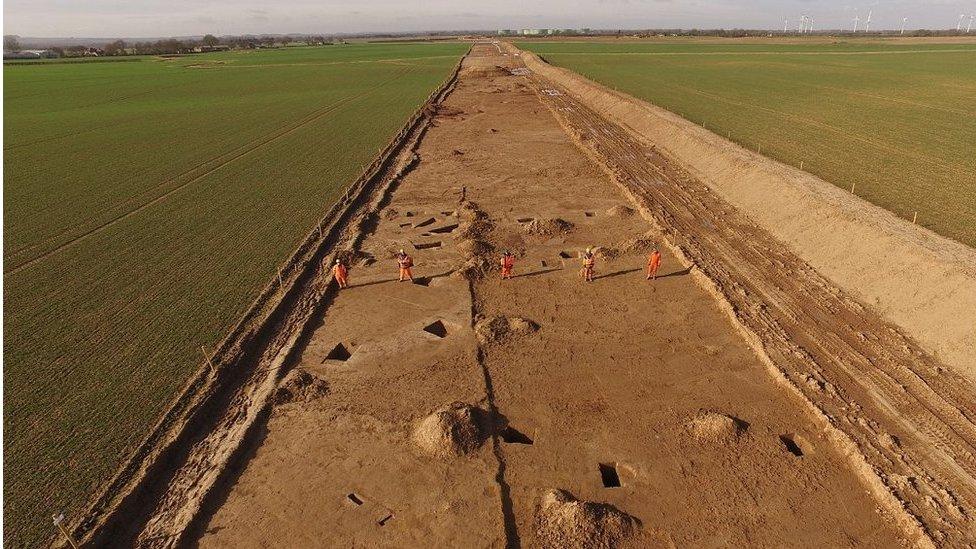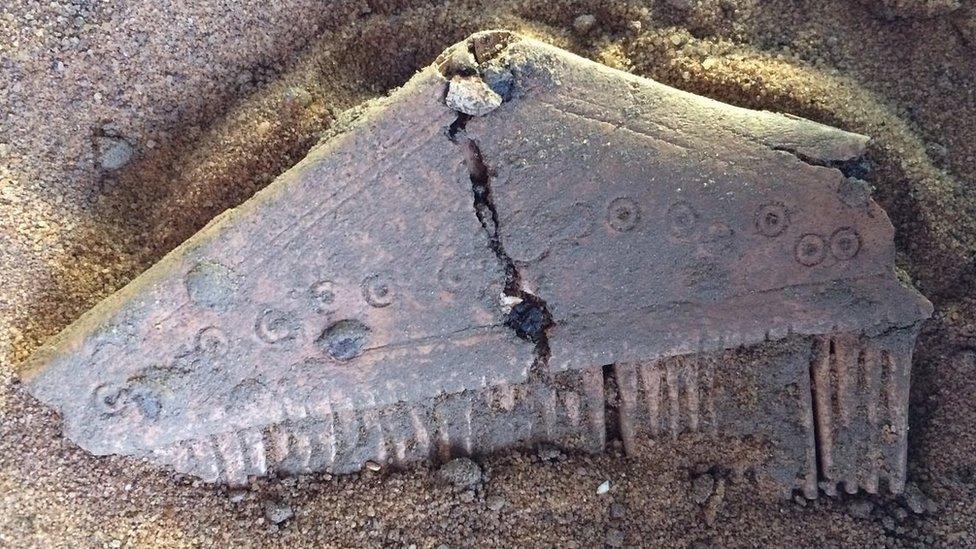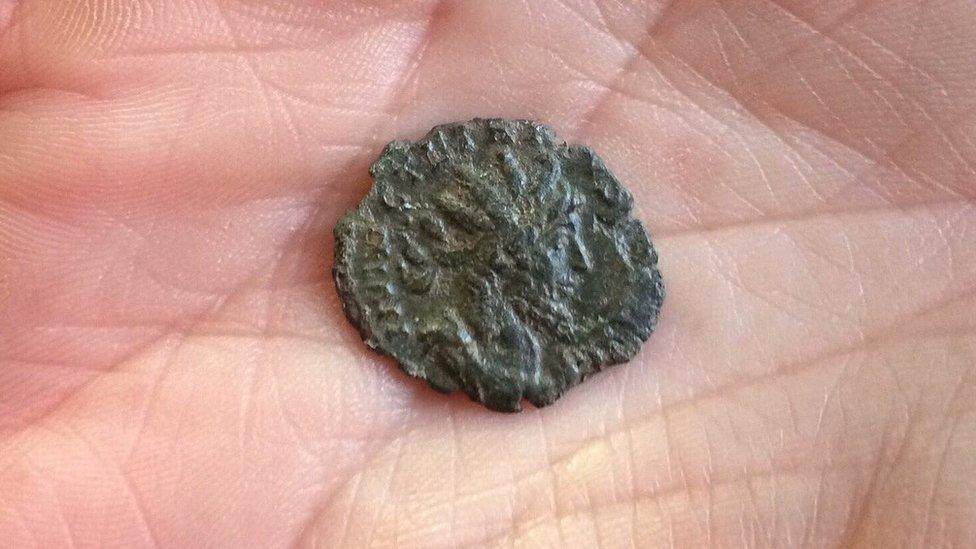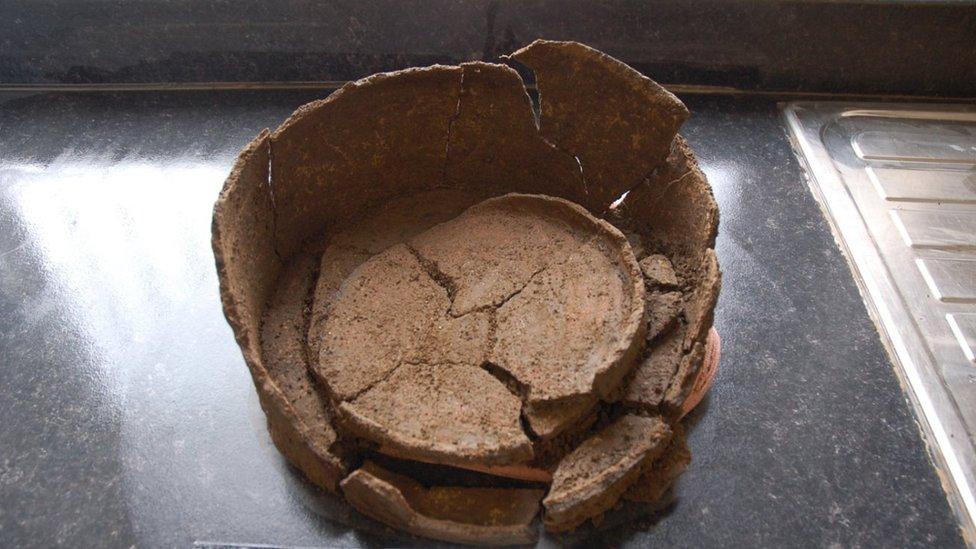Ancient artefacts found during Hornsea Project One wind farm work
- Published

Archaeological digs have been conducted along a 25-mile route to install underground cables
Thousands of artefacts and archaeological remains have been found during work to bury underground cables for an offshore wind farm.
Coins, brooches, pottery and evidence of an Anglo-Saxon settlement are among the finds unearthed during preparatory work for Hornsea Project One.
Other discoveries include two bodies dating as far back as Roman times.
The wind farm will be off the Yorkshire coast, but a 25-mile onshore cable will reach a North Lincolnshire substation.
From 2015, excavations have taken place along the cable route from Horseshoe Point, east of Tetney, to North Killingholme.

Items recovered by archaeologists

A comb was found in excavations carried out near Immingham
A Roman body and a medieval body near Killingholme
Bronze Age pottery at a site in Holton-le-Clay
Evidence of an Anglo-Saxon settlement in Laceby
Late prehistoric/Romano-British settlement activity in Tetney
Medieval salt production sites in North Coates
Coins, brooches, an iron knife, nails and quern stones

In total, 27,827 artefacts have been recovered weighing a total of 90 stone (569kg), with a report about the findings expected to be published soon.
Wessex Archaeology, which have been carrying out the excavations, said 70 people had been working on the digs "with some pretty inclement weather at times".

Other finds include coins, brooches and quern stones

Medieval ceramics were among the finds by Wessex Archaeology
Renewable energy company Ørsted hopes the wind farm, which it claims will be the largest offshore site of its kind in the world, will be fully operational by 2020.
A spokesperson said it was "delighted to see they've unearthed so many items spanning decades of history".
- Published3 February 2016
